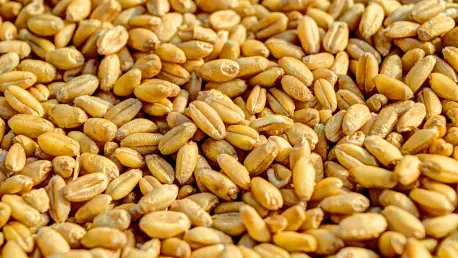In a fluctuating economic landscape, financial markets worldwide are witnessing significant changes, with the futures markets reflecting these shifts prominently. As of July 29, 2025, grain and livestock futures have taken center stage, drawing attention to the intricate dynamics at play within these sectors. The recent developments showcase a downward trajectory for grain futures while livestock futures are experiencing upward momentum. These movements, underscored by daily price changes and a myriad of influencing factors, create a complex narrative of market interactions. With corn, soybeans, and wheat futures experiencing declines, and livestock futures, particularly live cattle and feeder cattle, observing gains, the market dynamics are steering diverse economic implications.
A primary factor in grain futures’ decline is the anticipation of bountiful harvests, driven by favorable weather forecasts that are likely to result in record-high yields. This projection of ample supply has led to a bearish sentiment in the grain market, diminishing urgency and causing lower prices. However, soybean oil futures have managed to resist this trend, primarily due to their unique bullish fundamentals. The narrative of grain futures this week is further accentuated by the competitive global export market, as international sellers vie with the United States, exerting downward pressure on prices. In contrast, the livestock futures market has remained resolute, marked by a surge in live and feeder cattle futures. This growth is reflective of the positive sentiment within these markets, possibly catalyzed by shifts in trader confidence and evolving conditions in the fed cash cattle market.
Influences on Grain Markets
The grain futures market, consisting of commodities like corn, soybeans, and wheat, is experiencing a slump as traders navigate a plethora of influential factors. Crucially, favorable weather predictions indicate potentially record-breaking harvest yields, leading to an increase in supply that pressures prices downward. This expectation creates a bearish sentiment throughout the sector, prompting decreased prices as traders predict a robust supply without imminent shortages. Both December corn and November soybean futures have declined, with the former dropping by 2 1/2 cents per bushel and the latter by 2 cents. Differentiating the grain futures, soybean oil stands out with a more optimistic outlook, buoyed by its specific bullish factors.
The impact of international competition further amplifies challenges in the grain export market. As foreign markets compete vigorously with the robust supply forecasts domestically, the demand for U.S. exports faces hurdles, resulting in suppressed price escalation. Traders and analysts generally agree on a key theme that international pressure, coupled with strong domestic production, is instrumental in shaping the downward trends experienced by grain futures. This dynamic landscape underscores the influence of external factors and the implications on U.S. grain exports amid heightened global competition.
Resilience in Livestock Futures
In stark contrast to grain markets, livestock futures have emerged with a more positive outlook. October live cattle and August feeder cattle futures have shown appreciable growth, rising by $0.88 and $2.00, respectively. This uptick demonstrates resilience within livestock markets, attributed partly to evolving trader sentiments during ongoing market activities. Although no definitive bids or asking prices for fed cattle have been established, the underlying confidence hints at potential changes as the week unfolds. This trend illustrates a sense of optimism and underscores a general trust in upcoming price movements.
Beyond the livestock market’s internal factors, the wider economic environment plays a substantial role. External pressures from broader stock indices and crude oil prices shape market trends. While the Dow Jones Industrial Average and the NASDAQ have faced declines, indicating possible issues in the stock market, crude oil futures present a contrary image with an increase in September crude oil prices by $2.27 per barrel. These variations show a complex interplay of influences across different commodities, emphasizing the dynamic nature of futures markets. This economic backdrop affects livestock futures, which maintain an upward trajectory despite external challenges.
Concluding Market Insights
In today’s ever-changing economy, financial markets worldwide are undergoing notable transformations, with futures markets at the forefront of these developments. As of July 29, 2025, the spotlight is on grain and livestock futures, highlighting the complex dynamics influencing these sectors. Grain futures are on a downward path, while livestock futures are gaining momentum. Daily price shifts and numerous factors contribute to the intricate story of market interactions. Corn, soybeans, and wheat report declines, whereas livestock futures, particularly live and feeder cattle, are on the rise, shaping various economic outcomes.
Grain futures are weighed down by forecasts predicting bountiful harvests due to favorable weather, likely yielding record-high crops. This abundance has led to bearish sentiment, reducing urgency and driving prices down. However, soybean oil futures buck this trend, thanks to their unique bullish fundamentals. The competitive global export market further pressures grain prices, as international sellers compete with the U.S. Conversely, livestock futures show growth, driven by renewed trader confidence and shifts in the fed cash cattle market dynamics.









